














AZAZEL aka ZAZEL, APOLLO (Greek; God of Shinning Sun), Mithra (Roman), Mitra/Surya (Vedic Period), LUGUS/LUGH (Irish/Welsh), SHAMASH (Babylonian), UTU (Sumerian; The Shining One),* SAMAS (Akkadian), BABBAR (Sumerian), Ashur (Assyrian), SHAMIYAH (Hathra), SAMYAZA, SEMJAZA, SEMIHAZAH, SEMIHAZAI (As he appears in a lot of enemy literature, taken from Middle Eastern names and titles of the God)
- Zodiac Sign: Capricorn/Aquarius (both 1-10 degrees), for Spiritual Work, Ophiuchus Degrees of Scorpio**
- Tarot Card: Ace of Swords
- Planet: Saturn, the Lunar South Node (Dragon's Tail)
- Candle Color: Blue, Black
- Metal: Lead
- Element of Air
- Symbols: The Eagle and the Scorpion; the Faravahar (see below)
- Number: 20, also 5, 7, 36**
- Rank: Chief Of Security In Hell, works directly with Father Satan
From High Priestess Maxine:
"I know Azazel well and am very close to him. He is a very high ranking and important God. He is 7 1/2 feet tall, very strongly built with light blonde hair that is past his shoulders and flowing. He has piercing bluish grey eyes. He is very powerful and dedicated to Lucifer. He expects 100% and can be serious and strict. He closely interacted with and educated humans in ancient times. Azazel is NOT Paimon, as some of the grimoires of abuse claim. They are both different Gods. Azazel is a Prince. Paimon is a King. Azazel is very high ranking; VERY close to Lucifer. He says he is around 60,000 earth years old.
Azazel worked extensively with me on this page. He led me to many different references and resources (Listed below). He told me to mention the "Code of Hammurabi" and that the contents of this document have been drastically altered through the centuries and what we have now resembles nothing of the original. Azazel stands for justice and does not in any way advocate submission or turning the other cheek. Although there are a few accounts of Azazel's being married to various Goddesses, this is inaccurate. Azazel took a human wife some 10,000+ years ago. "
From High Priest Hooded Cobra 666:
“The real name of Azazel is Apollo, the most famous and beloved Ancient Greek God. He has went by many Names in all of the Ancient pantheons. In modern ‘demonolatry’, the title Azaz-El relates to his extreme power, being a word showing Power and Light as the derivative source: Azaz relating to massive power and EL relating to “Light”. To the Greeks he was Apollo, to the Irish he was Lugus, to the Romans he was both Sol, but also Mithra. In Rome, he ruled over the hidden mystery school of Mithraism.The school of Mithraism was a pinnacle of Roman Occult knowledge, for which very few things are known. He was known as Utu and Shammash in Sumeria. All these names and titles revolving around his extensive rank and power, him “being equal in brightness to the light of the Sun”.
Azazel is the embodiment and par excellence God of all the arts, prophecy, and deep divine wisdom. He is a master of divination in all it's forms and can teach divination to a master level. He is a master of the knowledge of the astrological “spheres” or celestial knowledge. Apollo was loved and enjoyed great fame and renown in all of the Ancient World. His disciple, Apollonius of Tyana, is another verified case of a mortal to have reached the Godhead. Apollonius’s prominence and story is what upon the lie of the fictitious Nazarene was based upon.”
Azazel is a God of exceptional importance. More elaborate information about him is on the link below, by High Priest Hooded Cobra 666
For Advanced Information & Hieratic Knowledge About Azazel - CLICK HERE
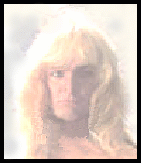 |
Azazel appears a lot like He appears in this picture. His figure is one of strength and extreme majesty. Azazel is Satan's Son. On the right, we can see his sigils. |
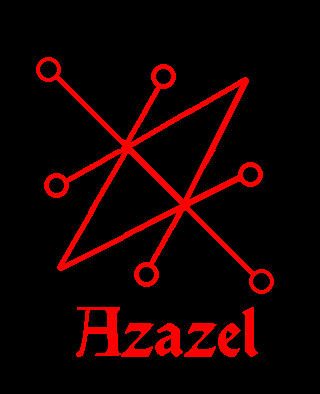 |
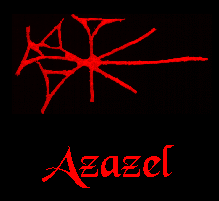 The sigil above is Sumerian, the one on the left is his personal sigil, very important in spiritual alchemy. |

|
Azazel is a warrior god of justice and truth. His cities were "Sippar," an ancient Akkadian city on the east bank of the Euphrates, north of Babylon and Larsa/Ellasar of Sumeria. Sippar is 20 miles (32 km) southwest of Baghdad in Iraq. Sippar was one of the first cities to be established by the Gods. In Ancient Greece, his place of worship was in the Delphi, the infamous "Dephic Oracle", which was the global center of spiritual consultation and prophecy for many centuries. 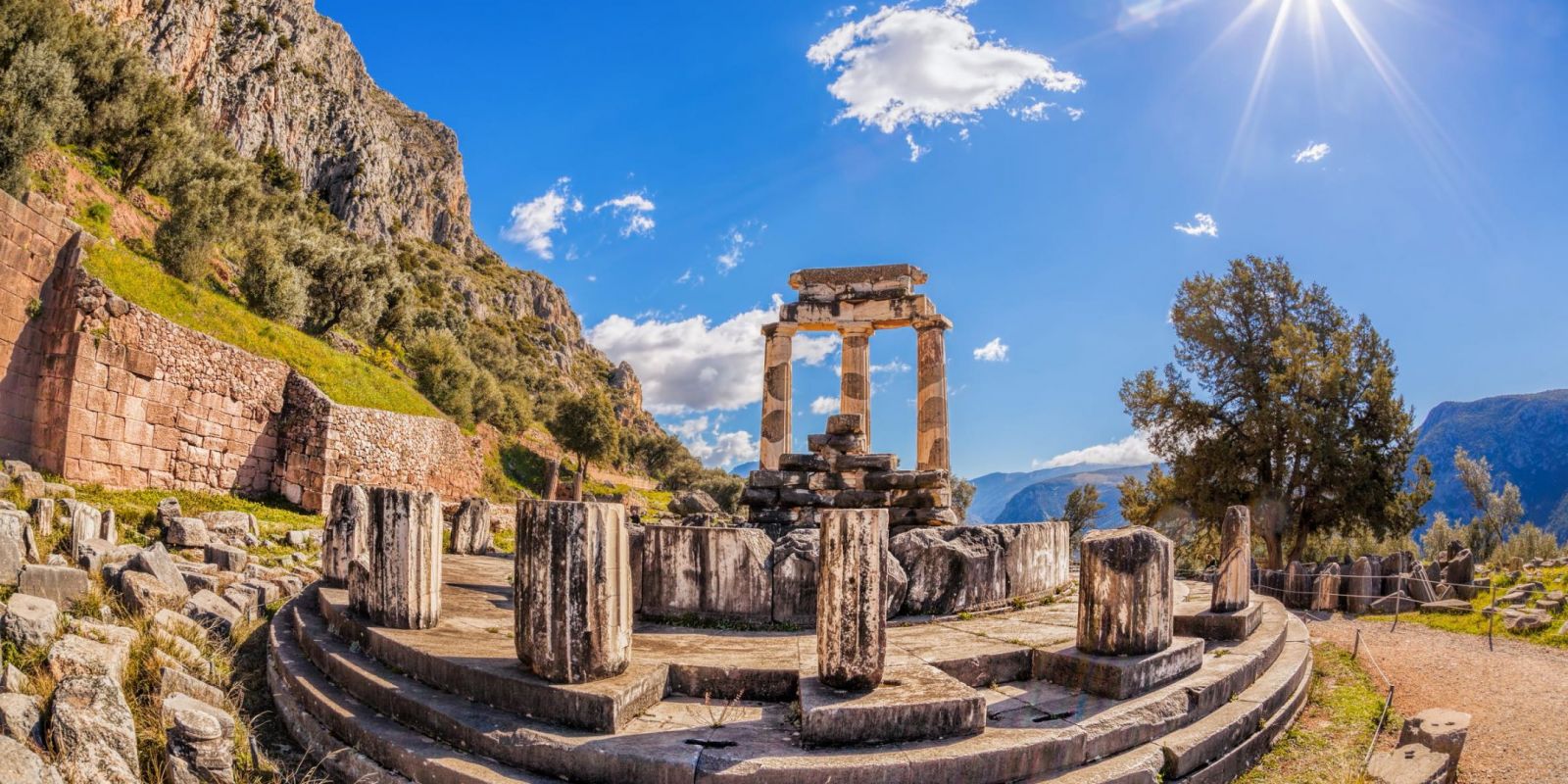 |
"Ellasar's Sumerian name is given as Ararwa, apparently for Arauruwa, 'light-abode,' which, in fact, is the meaning of the ideographic group with which it is written. The ruins of this ancient site are now known as Senqara, and lie on the East bank of the Euphrates, about midway between Warka (Erech) and Muqayyar (Ur of the Chaldees). In addition to the name Larsa, it seems also to have been called Aste azaga "the holy (bright, pure) seat" (or throne), and both its names were apparently due to its having been one of the great Babylonian centers of sun-god worship.
Like most of the principal cities of Babylonia, it had a great temple-tower, called E-dur-an-ki, 'house of the bond of heaven and earth.' The temple of the city bore the same name as that at Sippar, i.e. E-babbar, 'House of Light,' where the sun-god Samas was worshipped. This temple was restored by Ur-Engur, Hammurabi (Amraphel), Burna-burias, Nebuchadrezzar and Nabonidus. Among the tablets found on this site by Loftus was that which gives measures of length and square and cube roots, pointing to the place as one of the great centers of Babylonian learning. Besides the remains of these temples, there are traces of the walls, and the remains of houses of the citizens. The city was at first governed by its own kings, but became a part of the Babylonian empire some time after the reign of Hammurabi."¹
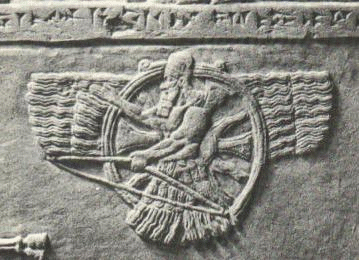 |
Azazel is the God of Justice and Revenge. He is a Master of the Black Arts and the Protector of Travelers. His symbol the faravahar (shown at left), represents freedom of choice and protection. The faravahar is the original winged disk. |
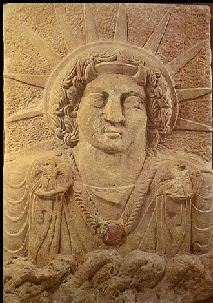
|
He was the rebel leader of the Igigi. Azazel is also the God of divination and has been consulted by many soothsayers. He was also the Chief Deity of the City of Hathra.
As the Chief Deity of Hathra, he was known as "Shamiyah." Note the horns in the photo of the sculpture at left. Along with his grandfather Beelzebub, he controlled the airways for the Gods, wearing his symbol of the eagle. |
"In Bad-Tibira, established as an industrial center, Enlil installed his son Nannar/Sin in command; the texts speak of him in the list of cities as NU.GIG ('He of the night sky'). There, we believe the twins Inanna/Ishtar and Utu/Shamash were born--an event marked by associating their father Nannar with the next zodiacal constellation Gemini (the twins). As the god trained in rocketry, Shamash was assigned the constellation GIR (meaning both 'rocket' and 'the crab's claw' or Cancer), followed by Ishtar and the Lion (Leo), upon whose back she was traditionally depicted."²
The Judeo/Christian Bible reads that "Azazel taught men to make swords, knives, shields, body armor."
The grimoires of spirit abuse claim that Azazel is a genius at working with metals, minerology, and geology. This is all symbolic. He is a Master of Alchemy; Spiritual Alchemy. Spiritual Alchemy has to do with the transformation of elements within the human soul, drawing energy from the earth and working with the earth spiritually. Each of the seven chakras is represented by a specific metal. Azazel works with dedicated disciples of Satan to achieve godhead.
All of the above is spiritual. The biblical account was twisted. The "swords, knives, shields, and body armor" are all spiritual weapons. He is an expert on the planets, constellations and astrology.
He is also very skillful in the arts, cosmetology, crafting of ornaments and jewelry. Azazel creates beauty.
AZAZEL'S SIGIL ONE
AZAZEL'S SUMERIAN SIGIL
*Many of the Original Gods were known as "The Shining Ones" because of their powerful auras.
¹ International Standard Bible Encyclopedia
² The 12th Planet by Zecharia Sitchin © 1976
Other References:
Religion in Ancient Mesopotamia by Jean Bottéro
Translated by Teresa Lavendar Fagan, University of Chicago Press, © 2001
An Illustrated Dictionary, Gods, Demons and Symbols of Ancient Mesopotamia by Jeremy Black and Anthony Green, © 1992
Mythology of the Babylonian People by Donald A. Mackenzie © 1915
© Copyright 2005, 2016, 2021 Joy of Satan Ministries;
Library of Congress Number: 001-216-457
